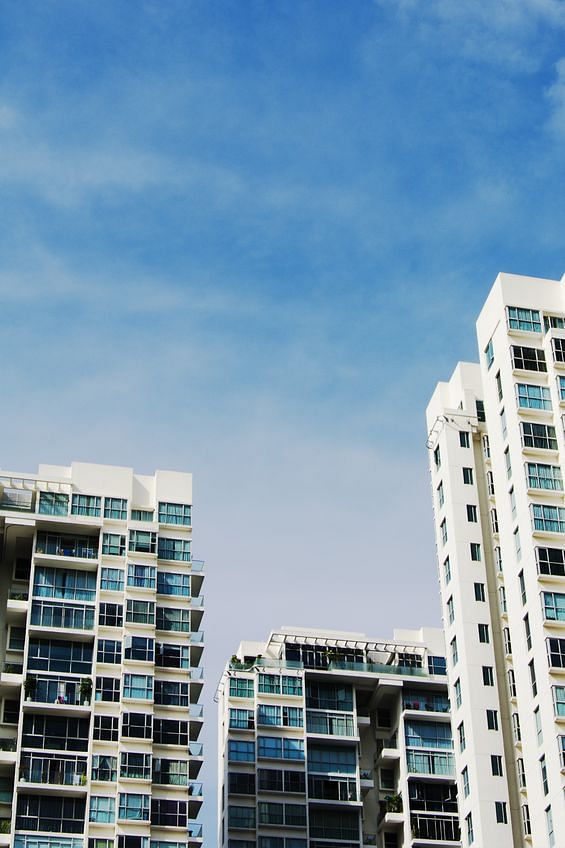An Executive Condominium (EC) is an aspiration for some Singaporeans. But for others, particularly those who cannot afford private housing but do not qualify for an HDB flat, it may be a necessity.
Here, we examine who exactly should be getting one of these properties:

photo: weehongsoon/123rf
What is an Executive Condominium (EC)?
An EC is a cross between public and private housing.
An EC is a full suite condominium, which generally means it has its own pool, gym, clubhouse, management committee, and so forth. ECs are built, marketed, and sold by private developers, exactly the same as other kinds of private property.
An EC is considered HDB property for 10 years. As such, it is subject to the same restrictions like a minimum occupancy period of five years, and restrictions on who can buy it. From the 11th year onward, an EC is fully privatised. It can be sold like any other private property, and foreigners, companies, or others can also buy it.
ECs are available to buyers who have a maximum household income of S$14,000. By contrast, Built to Order (BTO) flats allow a maximum household income of S$12,000.
Who should consider an EC instead? These are:
- “Sandwiched” Singaporeans
- Buyers who can comfortably handle the down payment
- Buyers who consider the EC an investment
- Buyers who will make actual use of the facilities
1. “Sandwiched” Singaporeans
A household income of around $12,000 to $15,000 marks a class of “sandwiched” Singaporeans.
These earnings are high enough to disqualify such Singaporeans from buying HDB flats. At the same time, a full-fledged condo (generally in the range of S$800,000 to S$1.2 million at least) is too heavy a burden for many of them.
ECs, while not necessarily cheaper than their mass-market counterparts, still come with government subsidies. For example, the CPF grant of $20,000 is available. In addition, due to the restrictions placed on ECs at the start (they are HDB properties for 10 years), most such units will be sold for cheaper than fully private condos.
For the sandwiched Singaporeans, ECs provide a compromise between public and private housing.
2. Buyers Who Can Comfortably Afford the Down Payment
One important difference between ECs and BTO flats is that buyers cannot use an HDB Concessionary Loan. They must get a loan from the bank. This is different in two ways.
The first is that bank loans have very different interest rates, which we explain in another article on bank vs. HDB loans. What’s most important though, is the down payment.
An HDB loan can finance up to 90% of the property, and the 10% payment can come fully from CPF. This means some Singaporeans can pay literally nothing from their bank account, when buying a flat.
For bank loans, there is a minimum down payment of 5% in cash (another 15% can come from your CPF, and 80% maximum is financed by the bank). This means a S$700,000 EC will require a cash down payment of at least S$35,000.
Buyers who can’t comfortably afford the down payment should consider other options (such as resale flats). This is especially true for buyers who could qualify for a BTO, but want to stretch themselves for an EC.
3. Buyers Who Consider the EC an Investment
Those who aspire to own a property as an investment (i.e. to rent out or sell for profit) will do better with ECs.
As these properties are full suite condos, they are often able to fetch better rental rates (depending on market conditions). One of the big advantages to ECs is that, because they are purchased with subsidies, there is likely to be a bigger profit margin when they’re sold.
Note, however, that you will have to wait till the 11th year, when the EC is fully privatised, to see the benefits of this. For many investors, this is too long to stay invested without any rewards. But if you consider your EC a stepping stone to something grander, this is worth a thought.
See also: This is how much you’ll need to buy a condo, Good news! Shorter waiting time for 1000 BTO flats next year
4. Buyers Who Will Make Actual Use of the Facilities
The maintenance costs of an EC are much higher than that of HDB flats. As with most condos, the residents share the maintenance costs via the management committee. And because ECs have fewer residents than HDB properties, this means everyone tends to pay a fair bit for maintenance.
Amounts that exceed S$200 a month are not uncommon, and ECs with very small numbers of residents can hit the S$400+ mark. This can be a steep price to pay for the various facilities.
So before you take the plunge, do think about how much you really need that gym or pool. If you will hardly ever use them, you are better off buying a centrally located resale flat (which can sometimes cost as much as an EC).
See also: Should YOU be buying a resale HDB flat?, 5 reasons why Sol Acres’ one-bedroom unit is perfect for newlyweds
This story was first published on Singsaver.

